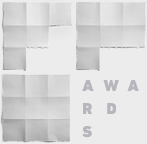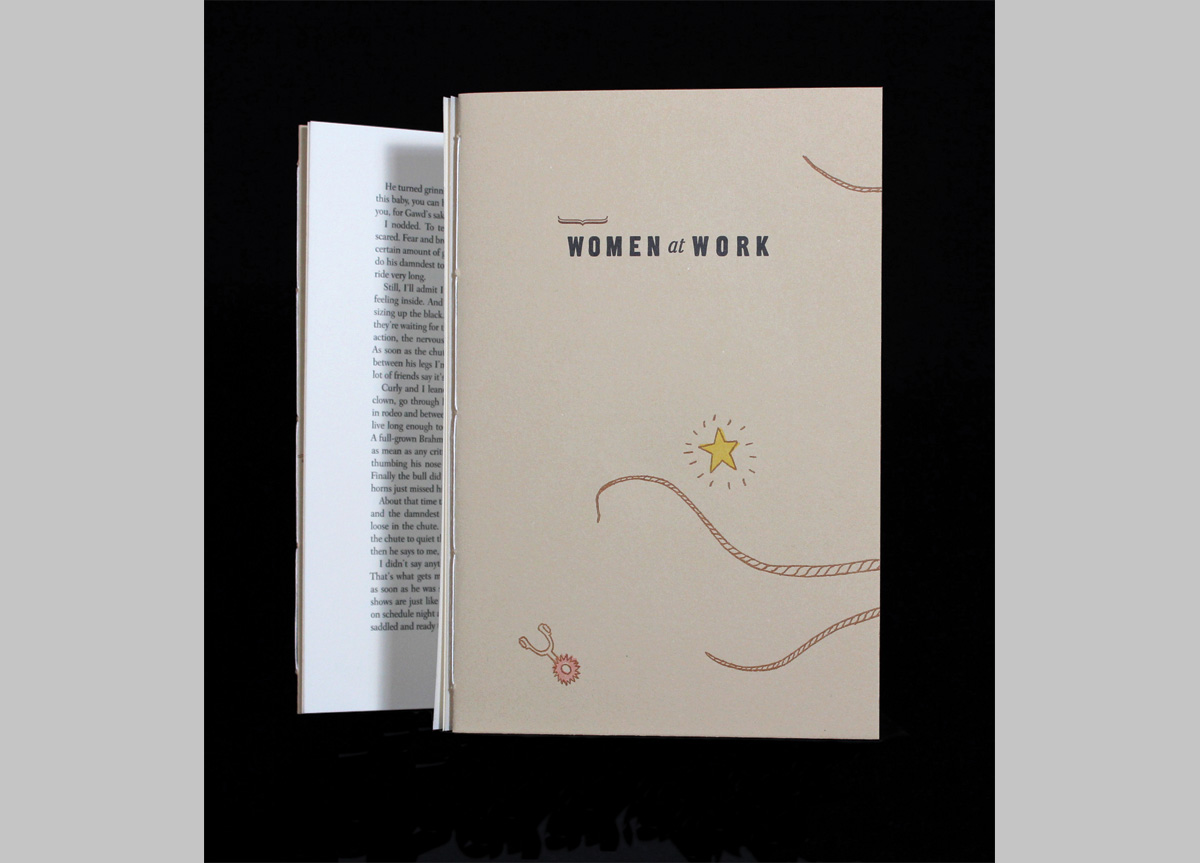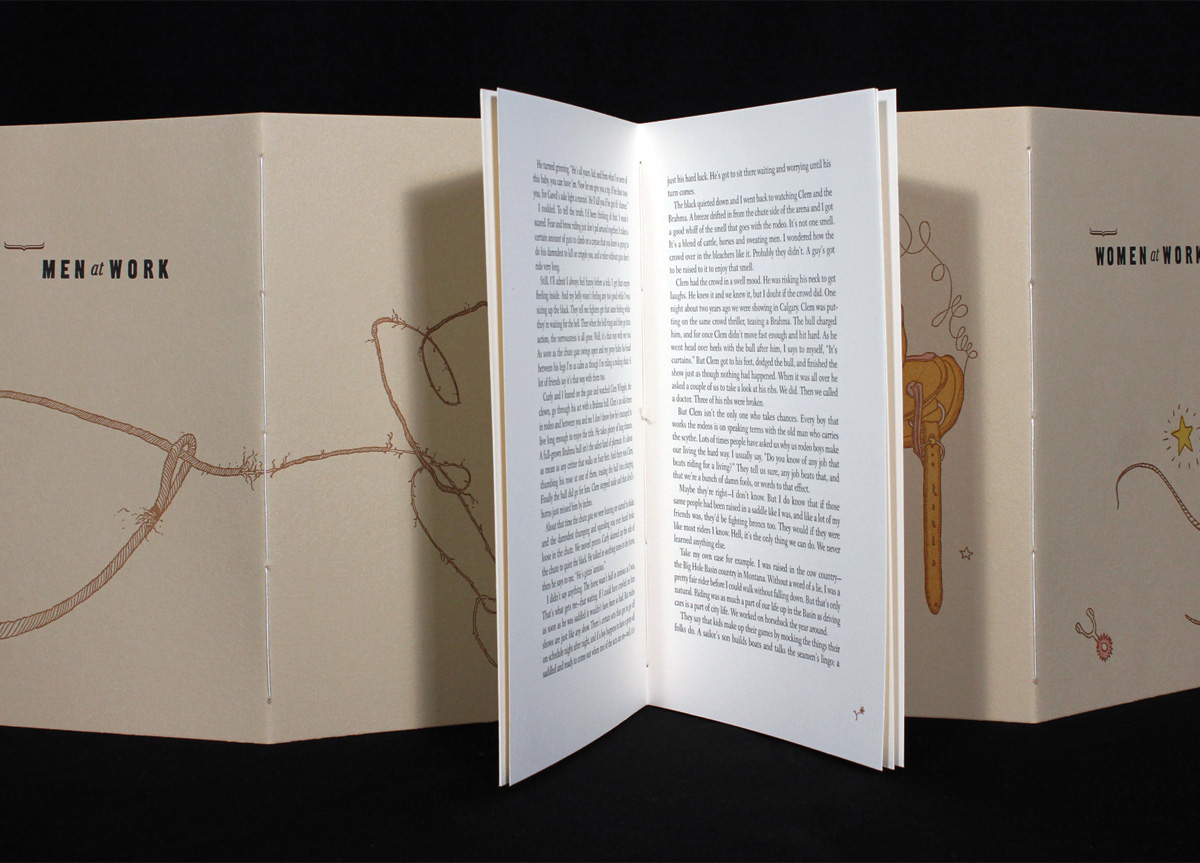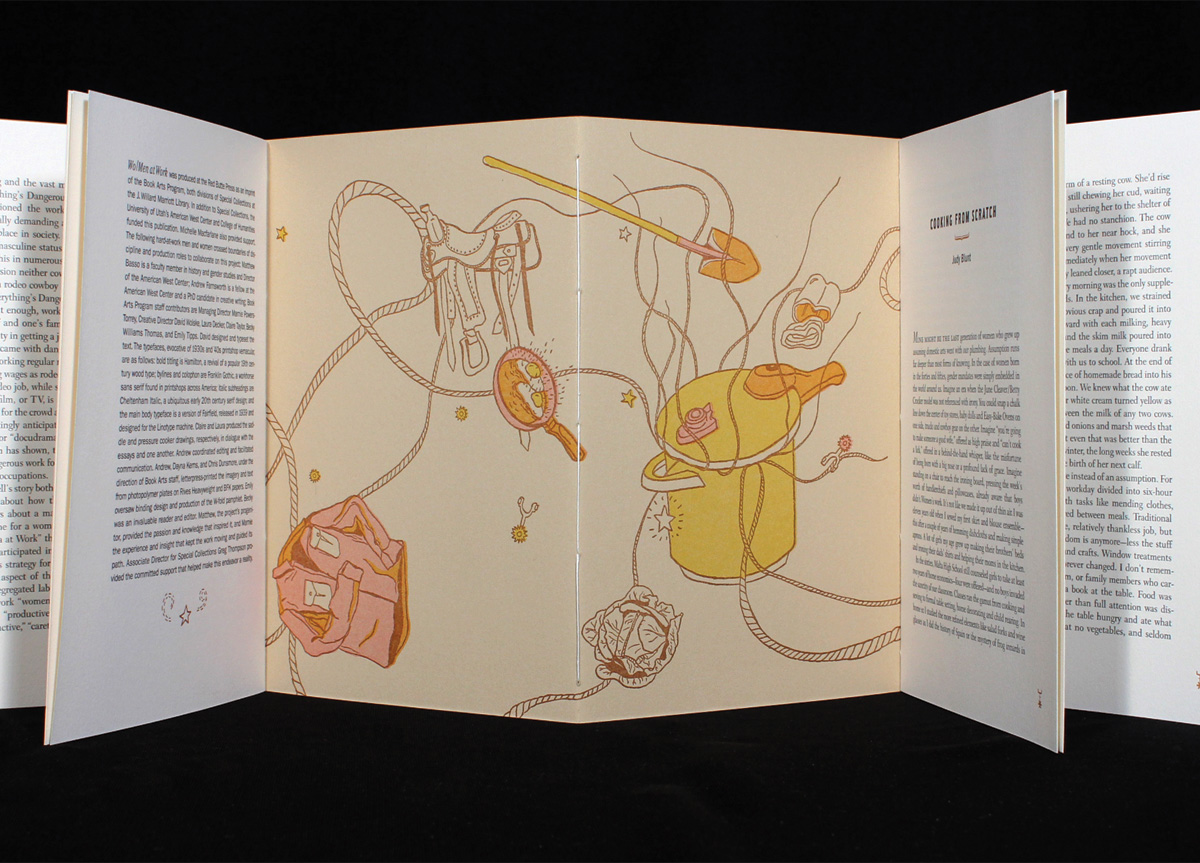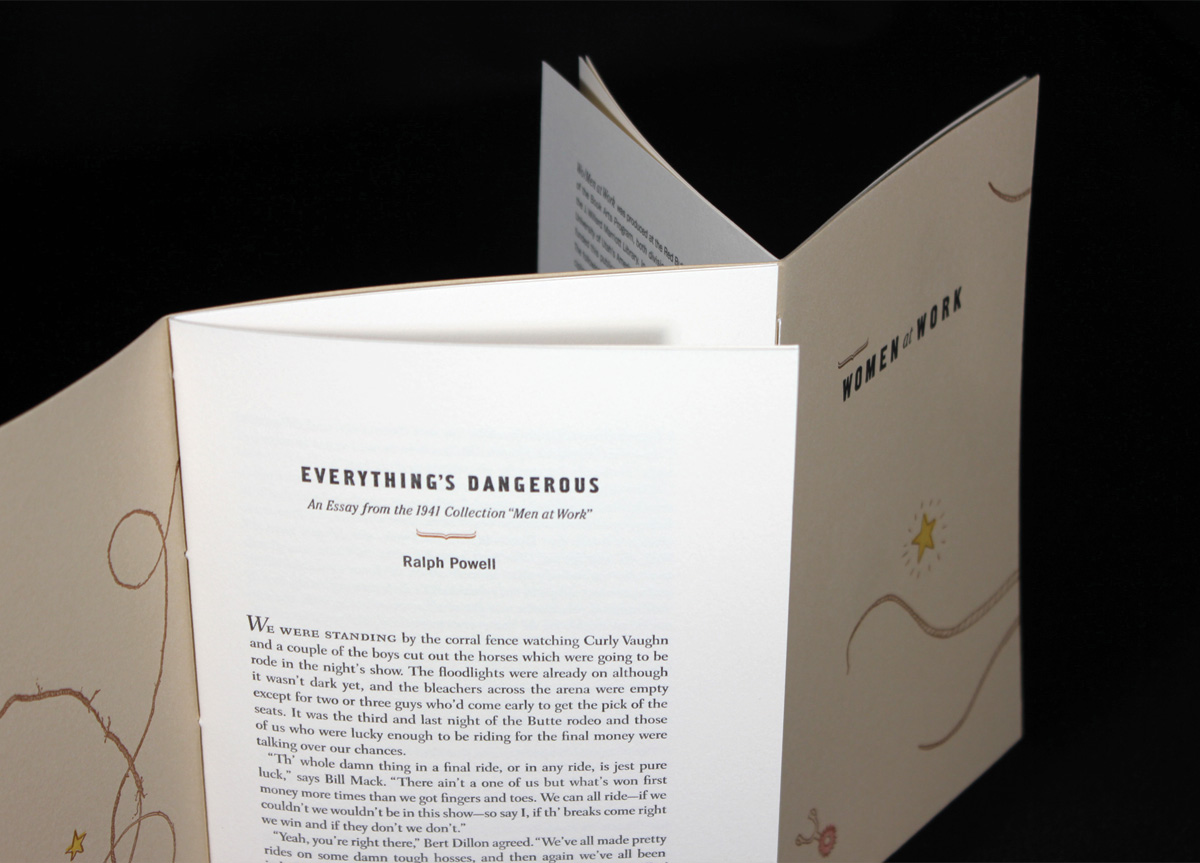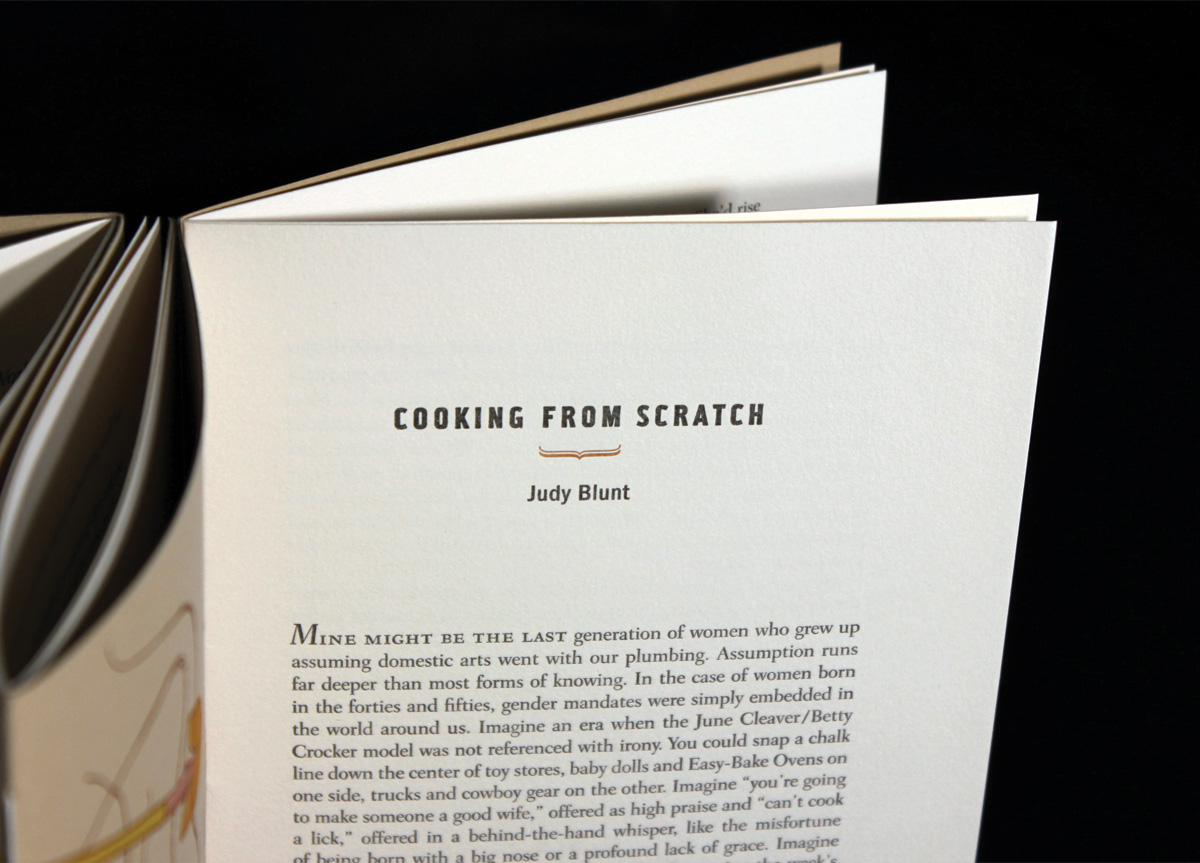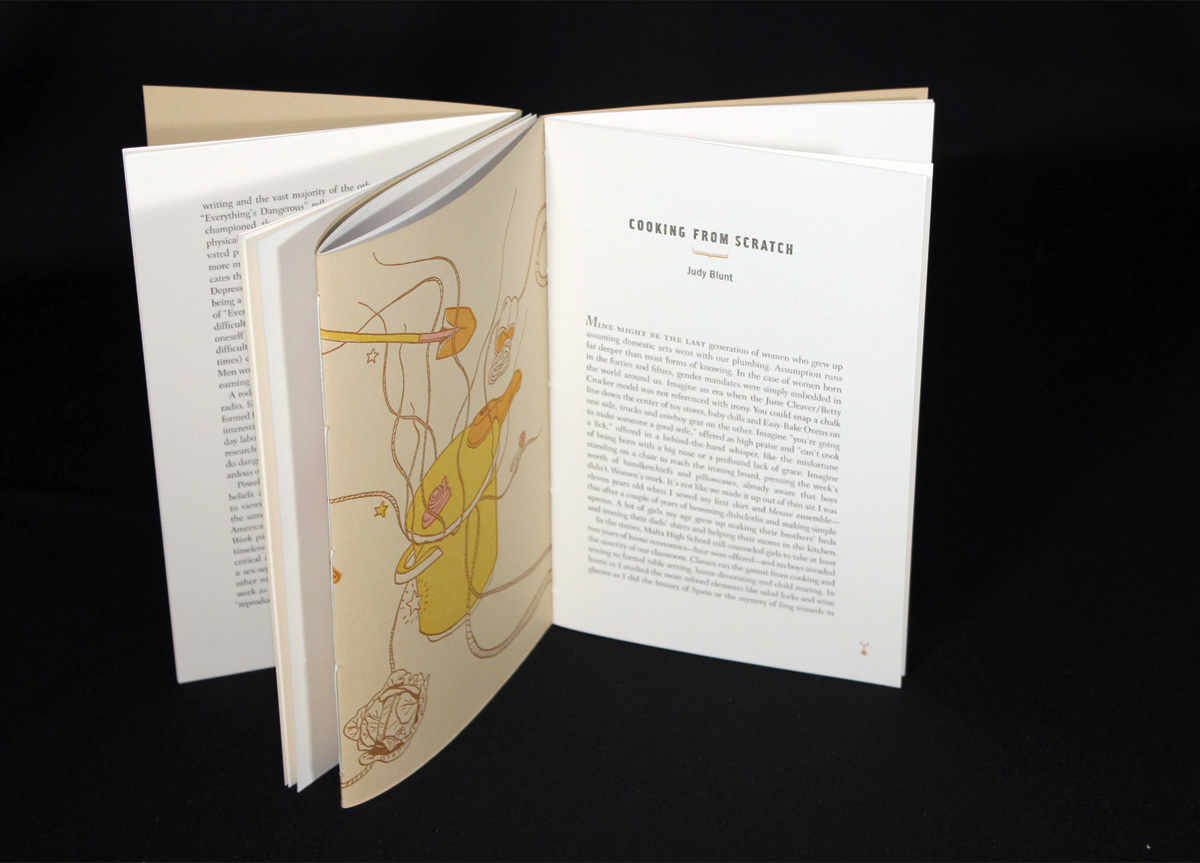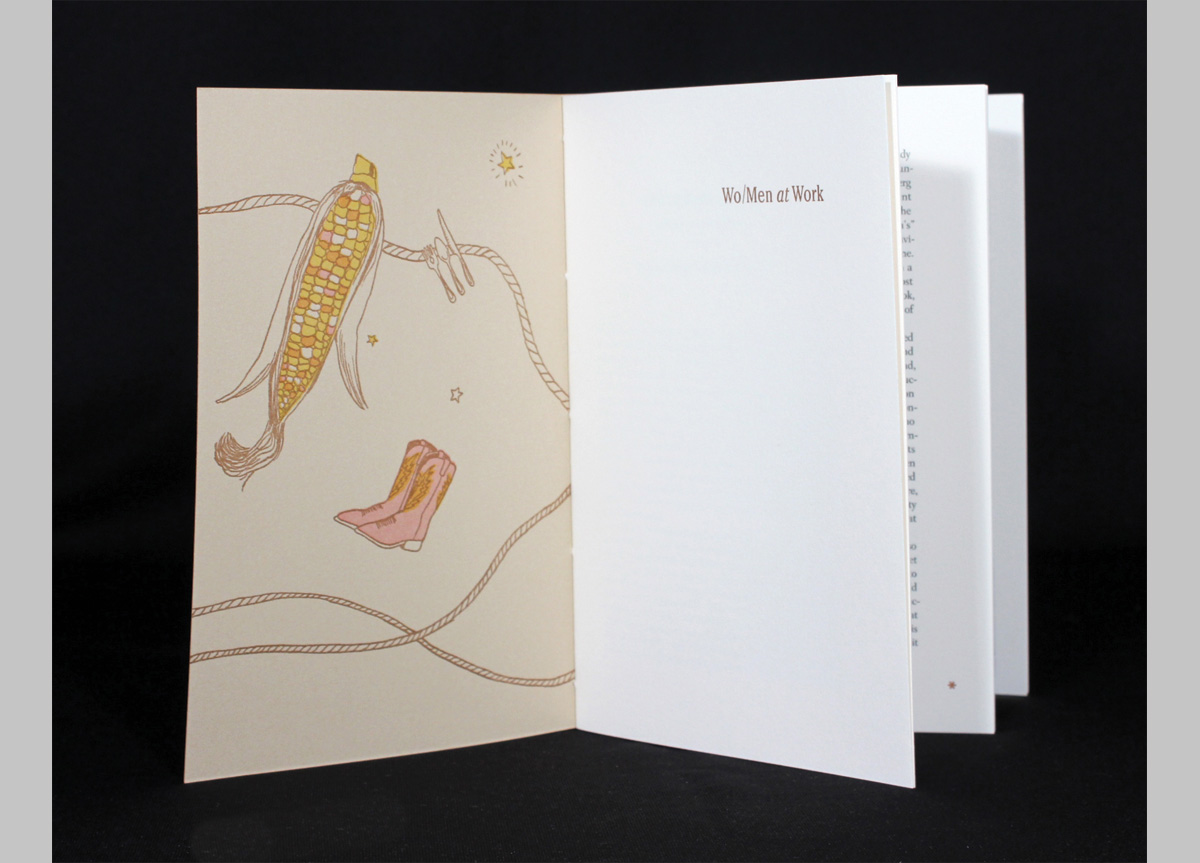CLIENT
Red Butte Press, J. Willard Marriott Library, The University of Utah, honors and extends the traditions of fine press printing by producing handcrafted limited editions. They are committed to contemporary dialogue and publish essays focused on the western United States as well as the best in modern fiction and poetry.
BRIEF
The three essays in Wo/Men at Work present multiple perspectives on work in the American West. The production of this handmade book furthers its investigation of labor through physical practice, and through the integration of cutting-edge and antiquated technologies.
APPROACH
This three-part pamphlet represents a creative, physically labor-intensive, and materially-productive engagement with questions about how work shapes our lives. It probes the politics and gender roles of traditional and contemporary labor—a hybridization of old and new methodologies, it embodies a critical examination of technology and consumption.
